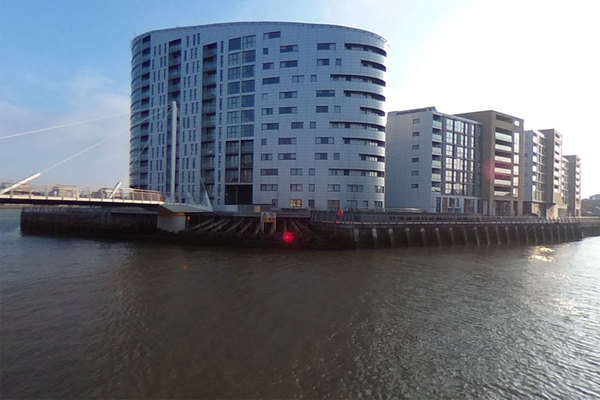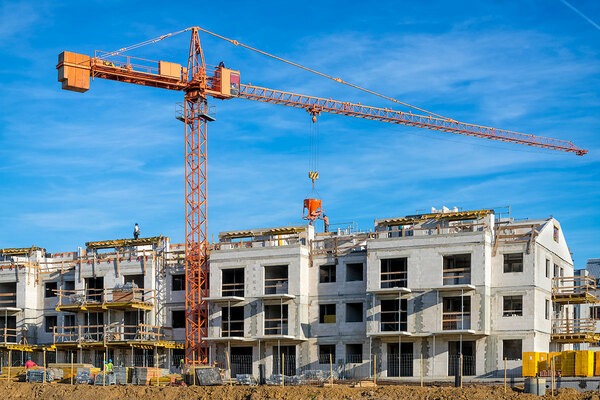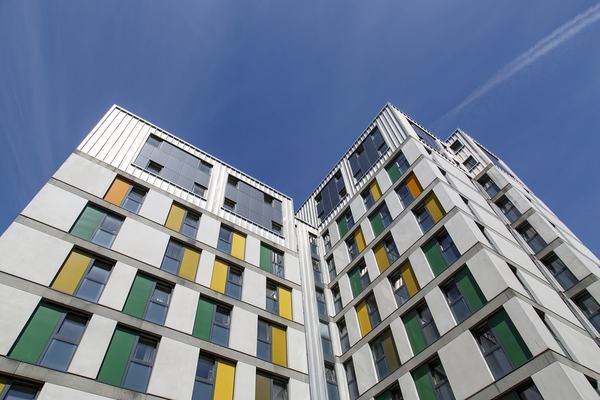You are viewing 1 of your 1 free articles
NHBC accepts cladding claims on more private blocks
Building warranty provider the National House Building Council (NHBC) has agreed to contribute to the cost of removing dangerous Grenfell-style cladding from more private tower blocks, Inside Housing can reveal.
The NHBC, which is responsible for providing building warranties on 80% of the country’s new build homes, has confirmed that it has now accepted claims on seven developments across the UK that were found to have aluminium composite material (ACM) cladding.
The figure was revealed by housing minister Kit Malthouse following a parliamentary question from Labour shadow housing minister Sarah Jones last week.
Mr Malthouse said: “The government is aware that the NHBC has currently accepted seven warranty claims for buildings with unsafe ACM cladding in England and Wales. A number of these claims include multiple buildings. Further claims are still being considered.”
The NHBC confirmed the figure but would not disclose the name or locations of the developments that it had accepted claims on.
This is the latest update on the number of developments the warranty provider has agreed to pay towards, after Inside Housing reported in November that it had “fewer than a dozen” cladding claims that had been accepted or were still under consideration.
At the time, Steve Wood, chief executive of the NHBC, confirmed that the organisation had accepted a claim on the 535-home New Festival Quarter block in Poplar, east London.
It was the second pay-out that the NHBC had made public after agreeing to cover the costs of re-cladding 980-home New Capital Quay in Greenwich.
However, residents of the building claimed last month that the building’s developer Galliard Homes had made a number of mistakes that had led to delays in the removal of the cladding.
The NHBC is the largest provider of building insurance in the UK.
Its Buildmark warranty policy usually lasts for 10 years and covers homeowners from physical damage to the home caused by a failure to build to the NHBC’s technical requirements.
According to the government, there are still 167 high-rise private residential blocks with dangerous ACM cladding on them, despite nearly two years having passed since the Grenfell tragedy.
This represents approximately 17,400 dwellings still affected by the issue.
In addition to providing warranty cover for new build homes and developments, the NHBC is the country’s largest provider of building control services – the official procedure for checking that new developments are built in line with regulations.
Inside Housing revealed last month that the NHBC’s building control arm had been responsible for signing off 52 towers with ACM cladding on their exterior.
Timeline: a short history of cladding and building regulations
- January 2000 - Following the tower block fire at Garnock Court - which killed a pensioner with disabilities - a report by the Environment, Transport and Regional Affairs Committee concluded that building regulations required "external surfaces (and hence cladding)... should be of a material classified as 'Class O' for spread of fire". It adds: "We do not believe that it should take a serious fire in which many people are killed before all reasonable steps are taken towards minimising the risks [from cladding fires]."
- January 2008 - The British Board of Agrément provides a certificate confirming a Class 0 rating for Reynobond PE, the material later installed on Grenfell Tower
- March 2013 - The coroner investigating the Lakanal House blaze in south London, which killed six, writes to Eric Pickles, communities secretary, advising him to review official guidance contained in Approved Document B "with particular regard to the spread of fire over the external envelope of a building". Mr Pickles replies, indicating that changes will not made until "2016/17"
- July 2014 - At a meeting of the Centre for Window and Cladding Technology, the government is warned that its guidance is not clear enough to prohibit the use of aluminium composite cladding with a polyethylene core (ACM(PE)) on tall buildings, which has been linked to a number of fires worldwide. The Building Research Establishment agrees to draft an 'FAQ' making it clear that this material is prohibited, but never does.
- 14 June 2017 - A kitchen fire at Grenfell Tower, west London, spreads to the recently installed ACM(PE) cladding. The resulting fire totally engulfs the building, trapping residents and killing 72 people.
- 22 June 2017 - The government writes to social landlords claiming ACM(PE) is banned by guidance, despite its failure to clarify this point before the fire. Philip Hammond, chancellor, repeats this claim on the BBC's Andrew Marr Show.
- 17 May 2018 - The government announces plans to ban combustible materials on high rises buildings, and later publishes draft 'clarified' guidance, removing the passage which had been interpretted as permitting 'Class 0' cladding.
Never Again campaign
Inside Housing has launched a campaign to improve fire safety following the Grenfell Tower fire
Never Again: campaign asks
Inside Housing is calling for immediate action to implement the learning from the Lakanal House fire, and a commitment to act – without delay – on learning from the Grenfell Tower tragedy as it becomes available.
LANDLORDS
- Take immediate action to check cladding and external panels on tower blocks and take prompt, appropriate action to remedy any problems
- Update risk assessments using an appropriate, qualified expert.
- Commit to renewing assessments annually and after major repair or cladding work is carried out
- Review and update evacuation policies and ‘stay put’ advice in light of risk assessments, and communicate clearly to residents
GOVERNMENT
- Provide urgent advice on the installation and upkeep of external insulation
- Update and clarify building regulations immediately – with a commitment to update if additional learning emerges at a later date from the Grenfell inquiry
- Fund the retrofitting of sprinkler systems in all tower blocks across the UK (except where there are specific structural reasons not to do so)
We will submit evidence from our research to the Grenfell public inquiry.
The inquiry should look at why opportunities to implement learning that could have prevented the fire were missed, in order to ensure similar opportunities are acted on in the future.












